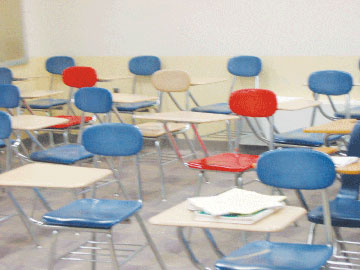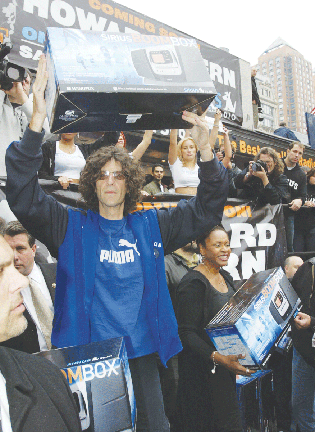John Coplans – not your average blind naked old guy
November 4, 2004
I often have an issue with photography. My problem comes from the fact that there is some difficulty in distinguishing exactly where the process of the craft ends and where the art begins. Sure I know how there can be no truly objective photography; that the camera acts as an extension of the artist’s eye; that the subject must therefore be filtered through the subjectivity of the artist’s vision, or whatever – but when it comes down to it, you’re capturing an image of something that already existed – you, as an artist, have simply framed it.
In John Coplans’ photography exhibit, now showing at the MIT List Visual Arts Center till Dec. 31, the artist has managed to escape my admittedly narrow view of the photographic medium. He has accomplished this largely though the rather simple process of placing two photos together and matting them within a single frame. The exhibit, titled Body Parts – A Self-Portrait by John Coplans, can only be labeled as such in its technical execution. Visually, there is almost no John Coplans to be seen. Often it is even difficult to immediately distinguish that these minimalist black and white photos of the artist’s isolated body are even of human origin. In one such piece, a photo of his right leg is juxtaposed with a complementing left leg. The real interest though lies in how Coplans through his pairing, has forced us to view these photos together, creating a unique whole. Through this, Coplans creates entirely new forms out of the more familiar preexisting human forms. He does this with sometimes humorous yet always reflective results.
One reason the photo couplets are so convincingly un-human, though composed strictly of Coplans’ own body, is that there is an organic nature to his process of pairing the photos. The pieces often create symmetrical figures that reflect the same sense of symmetry found in nature – the human body has two eyes, ten fingers and toes, a pair of arms, a pair of legs, orifices in between them. But at the same time the images lack perfect symmetry, as the photos are two individual and separate images and not just a mirrored reflection. This allows Coplans to assemble images to create what at times appear to be other-worldly beings. On more than one occasion, it was only after I squinted and blocked out half of a paired image that I could even distinguish what exactly I was looking at. It turned out that it was Coplans kneeling. Its very simplicity allows us to remove the figures from time or social and political context, emphasizing the body as pure form.
By taking this form and fist deconstructing it (isolating just his arms or legs) and then reconstructing it (pairing the photos together), we can see the body as not simply a beautiful form in and of it self, but as a malleable shape to be exploited by the artist. In this sense, brush stokes and paint textures are instead replaced by tufts of hair and varicose veins.
John Coplans died in 2003 at the age of 83 and these works were made between 2001 and 2002. As a resident of downtown Manhattan during the September 11 attacks, Coplans describes an unconscious connection between those events and the work he was doing for this project. “I had started making images of my arms and legs and then collaging a pair of them together to make one image. After I had made for such images, I realized the connection when it was announced in the new that workmen were digging up debris and constantly finding human body parts.” Coplans also struggled with an increasing loss of vision, eventually leading to near total blindness at the end of his life. Since he had largely been working with self-portraits since 1984, Coplans had become used to having an assistant do the actual shooting.
“The solution was to recognize the fact that we don’t actually see an image with our eyes; instead we perceive it with out minds… I had to imagine the image in advance and then find the pose. In the past when I could see, my assistant would have to take many photographs to match the image on the video, but when I realized that it was more a matter of perception than sight, I could easily previsualize an image and make a drawing that my assistant could match on film.”






















































